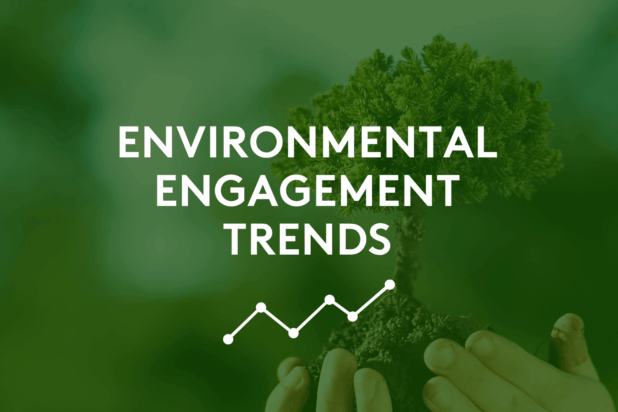We explore why many adults – especially younger ones – have been disengaging from interest in environmental issues – and how to win them back

In recent years, GB TGI has revealed more and more of a shift in attitudes towards the environment. The percentage of adults who agree there’s “too much concern with the environment” has jumped nearly 60% in the last four years, whilst agreement with “climate change doesn’t worry me” has risen by over 40%.
But if we look more closely, we can see that many adults aren’t ‘anti-environment’ per se, instead there is significant uncertainty and confusion around how to engage with environmental issues.
Monthly data from the GB TGI October release reveals that 34% of adults would like to be more environmentally friendly, but they don’t know how. Looking at how this varies by age, 54% of those aged 15-24 feel they should do more, compared to only 13% of those aged 65+, which shows that most young people do in fact care. This suggests that there’s a role for marketeers in educating audiences on the actions they can take, and the positive impact these will have.
Environmental information overload
Understandably, the answer is not just feeding consumers more messages. TGI shows that almost half of adults feel overwhelmed by the amount of information there is surrounding the environment – with younger adults in particular feeling swamped by it, especially those aged 25-34. Instead, it’s about simplification, making action feel easy and worthwhile.
Over a quarter of young people don’t expect to see the impact of climate change
Two-thirds of adults (69%) agree that each person must play their part in stopping climate change and saving the environment, with agreement consistent across all age groups. Yet, most surprisingly, it’s more likely that the youngest Britons don’t expect to see an impact in their lifetime.
Worryingly, younger adults are more likely to believe that renewable energy (e.g. wind, solar power) isn’t a viable alternative to fossil fuels (e.g. oil and gas), with 2 in 5 (41%) 15-24 year olds agreeing with this statement, compared to only 29% of those aged 55 and over, despite over half of the UK’s electricity coming from renewable sources in 2024 (per official statistics from Renewable UK).
It seems the challenge is, how can government, businesses and brands help young people understand that progress is being made, that renewable energy is not just viable, it’s powering our daily lives already, and that the actions that can help maintain momentum are easier than you might think.
The risk long-term is that Britons become increasingly estranged from climate positive action, with overwhelm and anxiety driving people towards misleading narratives rather than solutions that will demonstrably improve their lives.
Alex Whitehill, Strategy Director at creative and media agency – and TGI client – Media Bounty, comments.“Right now, for many Brits, climate isn’t a top priority. And that’s not just because of the cost-of-living crisis. Climate is confusing, feels distant and is highly politicised. When people feel overwhelmed or powerless, they often disengage or downplay.
This is a known barrier to climate engagement. But the opposite is also true. When people feel hope is not lost, that they can make a tangible difference, engagement increases. The data here shows some alarming generational nuances and tells us that different approaches are needed for each cohort.
At Media Bounty, we’ve focused on understanding The Persuadables, the 69% of the UK population who are on the fence when it comes to climate. It’s helped us frame comms around what people actually care about, not what we would like them to, in order to drive action. Naturally, what people care about changes with age and life experience.
For marketeers, instead of talking about the climate or environment at a macro level, think of your audience’s world as concentric circles of impact. Start with the individual. One of the most compelling reasons to act is often saving money. Then move outward. Family, friends, community, local or regional benefits and even pride. When we focus on the stuff that matters to people every day, action feels worthwhile.”